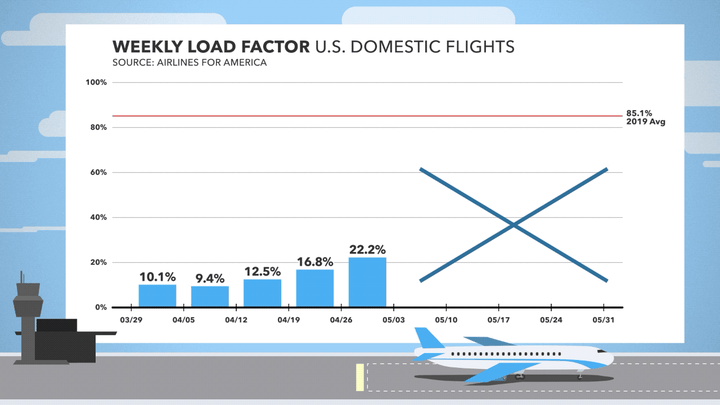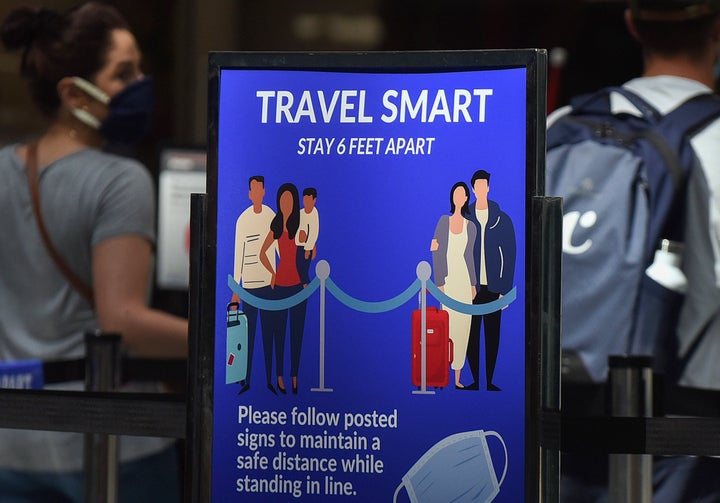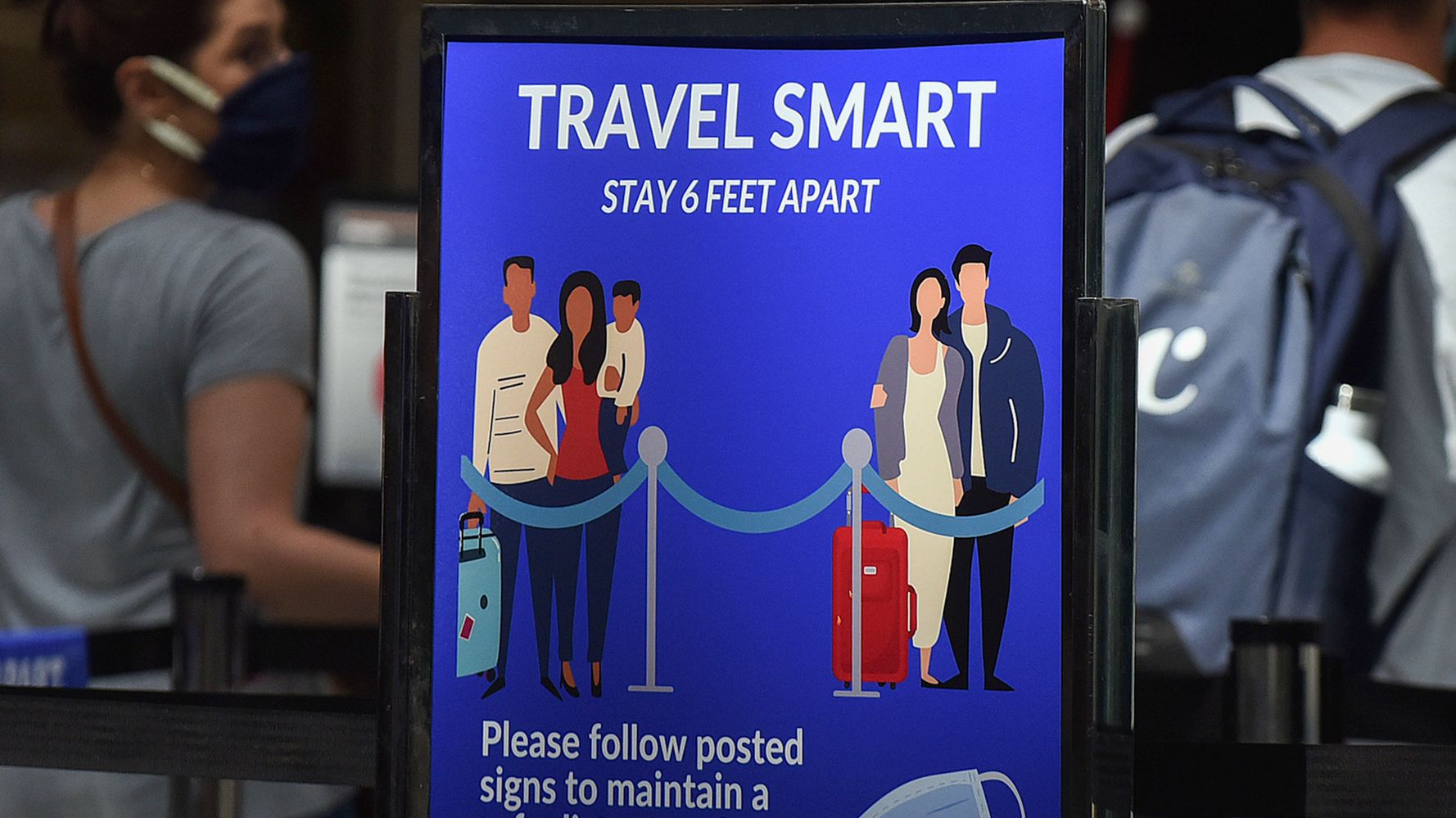This article is published in partnership with Newsy.
As America creeps — or in some cases, sprints — back to business amid an ongoing pandemic, there’s at least one industry that’s largely charting its own course through the crisis: airlines.
Like most industries, the coronavirus has hit airlines hard, and they are eager to return to normal. But unlike many others, the companies have received billions in dedicated relief funding with very little federal oversight on how to ramp up operations safely.
Most airlines suggest but don’t require that passengers wear masks. Some have encouraged social distancing by not filling middle seats. But others continue to pack passengers into all available seats. Ultimately, the need to fill seats, combined with limited regulation, means the number of people traveling on planes is rebounding.
“Load factor” is the industry measure of how full a plane is. Airlines report those numbers in quarterly financial filings and in monthly reports to the Bureau of Transportation Statistics. But those reports are typically not released until weeks or even months later. In late March, as the coronavirus ravaged the industry, the trade association Airlines for America began voluntarily posting daily data on its website that included average load factors.
In 2019, the average domestic flight was 85.1% full. In mid-April ― the height of the coronavirus pandemic in the U.S. ― that figure plummeted to 9.4%.
Airlines responded to the low demand in part by cutting the number of flights. That meant that, as people started to resume air travel, the available flights were carrying more passengers and the load factor began rising again. By the week of April 27, domestic flights were averaging 22.5% full. That’s when the industry group dropped the average load factor from its daily updates.
The organization said it stopped providing the figure because it was being “misconstrued with the financial health of the industry,” at a time when passenger numbers remain historically low and many planes sit idle.
But since then, other indicators show air travel has continued to recover. The number of travelers passing through Transportation Security Administration checkpoints has increased significantly since April 27. And data that Airlines for America continues to report shows the average number of passengers per plane rose to 54 as of June 3 from as few as 15 in April.
Upon request, Airlines for America provided updated load factor data to Newsy and HuffPost for the week ending May 31. That also showed a dramatic rise ― to 48.6% full. That’s still below pre-pandemic levels, but a more than fivefold increase from two months earlier.
Watchdogs say allowing airlines to dictate how full flights are should be cause for concern as the pandemic wears on ― and one that federal regulators should be addressing.
“The Department of Transportation hasn’t come out with any guidelines,” said Lauren Wolfe, counsel for Travelers United, a consumer advocacy group for travelers. “So airlines have set their own rules.”

Airlines Plot Their Own Course
As airlines decide how to navigate the pandemic, Airlines for America’s chief economist John Heimlich said they are weighing many factors.
“The goal is to maximize safety without going out of business,” Heimlich said. “It’s up to each carrier how they want to ensure public health.”
Some, like Southwest and Hawaiian Airlines, claim to have capped capacity at around two-thirds by not selling middle seats (though neither provided data to verify compliance). Delta said it’s adding flights to keep loads below 60%. But other carriers have announced no restrictions on how many people fly on their planes.
“We want to ensure that we have seats available for customers to get to their destinations,” Charles Hobart, a spokesperson for United, said of the company’s decision not to limit capacity.
Airlines for America data shows that U.S. carriers are operating nearly 500 flights a day that depart more than 70% full. Passengers are noticing, and complaints on social media have gone viral.
“Well silly me thinking that an airline would adhere to social distancing guidelines,” tweeted an American Airlines passenger in late April. A doctor on his way home from New York posted a picture of a crowded plane, writing, “I guess @united is relaxing their social distancing policy these days? Every seat is full on this 737.”
In response to the criticism, United began notifying passengers if their flights were expected to be more than 70% full — and giving them options to rebook. American Airlines later followed with a similar system. Southwest said its policy of keeping middle seats open is “preempting the need for us to message on individual flights.”
American Airlines is the only Airlines for America member that separately provides its own load data. Its domestic flights averaged 47.4% full in May, significantly higher than the trade group’s average of 37.5% for the month.
Even members of Congress have found themselves on unexpectedly packed planes. Rep. Jared Huffman (D-Calif.) took to Twitter last month to voice concern about his American flight. “Packed,” he wrote. “Not safe and not OK.”
No Federal Oversight
Airlines and some academics argue coronavirus risk is greatly mitigated by the air filtration systems on planes, combined with safety measures encouraging face masks and extra cleaning.
“We have technology that does a really good job of controlling airborne bacteria and viruses,” United’s Hobart said.
But there remains little oversight of the airline industry’s response to the coronavirus.
“There’s no rules right now regarding coronavirus and capacity on airplanes,” said Wolfe, adding that she wouldn’t be surprised to see flights become even more packed. “Airlines make their money when the flight is full.”
Lawmakers have started to call on the Department of Transportation to do more.
“The Department guidance should clearly lead the airlines to either keep middle or adjacent seats open, or limit capacity of aircraft to a level that allows adequate social distancing,” wrote Sen. Maria Cantwell (D-Wash.) in a May 18 letter to Transportation Secretary Elaine Chao. “The traveling public deserves and should expect your leadership during this public health crisis.”
The Department of Transportation confirmed that it “has not issued any new regulations about how many seats airlines can sell,” but did not respond to repeated requests for more detailed comment. The Federal Aviation Administration said it does not regulate how many people can be on a plane, beyond certifying the maximum number of seats on an aircraft.
The industry’s trade group pointed to the Centers for Disease Control and Prevention as the more appropriate regulator of virus-related issues such as middle seats and capacity.
“If they chose to regulate something like that, I think they could,” said Sharon Pinkerton, Airlines for America’s senior vice president for legislative and regulatory policy. “CDC hasn’t made any such pronouncements, but has said that because of how air circulates and is filtered on airplanes most viruses and other germs do not spread easily on flights.”
The CDC told Newsy/HuffPost that it “does not regulate the airline industry” and continues to recommend that people avoid nonessential travel. The CDC’s website says “social distancing is difficult on crowded flights, and you may have to sit near others (within 6 feet), sometimes for hours. This may increase your risk for exposure to the virus that causes COVID-19.”
Airlines for America continues to exclude load factor data from its daily COVID-19 updates. And Pinkerton insisted that flying on a full flight is completely safe.
“If it weren’t,” she said, ”we wouldn’t be doing it.”

- Stay up to date with our live blog as we cover the COVID-19 pandemic
- 7 essential pieces of relationship advice for couples in quarantine
- What you need to know about face masks right now
- How to tell if you need to start doing online therapy
- Lost your job due to coronavirus? Here’s what you need to know.
- Parenting during the coronavirus crisis?
- The HuffPost guide to working from home
- What coronavirus questions are on your mind right now? We want to help you find answers.
-
Everyone deserves accurate information about COVID-19. Support journalism without a paywall — and keep it free for everyone — by becoming a HuffPost member today.
